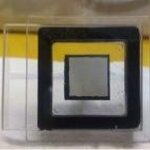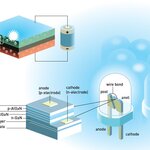Applied Physics

Fewer cords, smaller antennas and quicker video is the goal of a microwave circuit that has set a new world record for data transmission.
As we all know, watching a film clip on a tablet or phone us a lot more than pressing 'play' - the data must reach us quickly via a long series of devices, antennas and receivers. With an increasing number of users, higher demands on image quality and more wireless systems, producing methods for transmitting the enormous amounts of data through the air with the right speed poses a major challenge.
The solution might be to use higher frequencies than…
I did almost all of them when I was a kid, except superglue my fingers together. I had a few pocket knives but my favorite was the Swiss Army knife. This is what I use today to void product warranties:
Leatherman Juice XE6
Without further ado, Gever Tulley's "5 Dangerous Things You Should Let you Kids Do":
And here's 5 more things your should let you children do, according to Tulley:

Computer chips with superconducting circuits would be 50 to 100 times as energy-efficient as today's chips due to a lack of electrical resistance.
That means less heat, less deformation and less energy cost.
Superconducting chips also promise greater processing power. Superconducting circuits that use so-called Josephson junctions have been clocked at 770 gigahertz, or 500 times the speed of the chip in the iPhone 6.
The big problem is that superconducting circuits, like quantum computing, are always five more years away, and have been for two decades. Even if superconducting circuits were…

The Obama administration only recently banned incandescent bulbs and compact fluorescent bulbs are getting all of the marketing due to generous government subsidies, so light emitting diodes (LEDs) are yet to even get off the cultural ground but researchers are already moving on to their successors.
Enter carbon electronics.
Electronics based on carbon, especially carbon nanotubes (CNTs), are emerging as successors to silicon for making semiconductor materials. And they may enable a new generation of brighter, low-power, low-cost lighting devices that could challenge the dominance…

In the future, it may be possible to try on clothes even when the shop is closed, thanks tosemi-transparent mirrors in interactive systems presented at the ACM UIST 2014 human-computer interface conference.
The work, led by Professor Sriram Subramanian, Dr. Diego Martinez Plasencia and Florent Bethaut from the University of Bristol’s Department of Computer Science, builds on a mirror’s ability to map a reflection to one unique point behind the mirror, independently of the observer’s location.
In a museum, people in front of a cabinet would see the reflection of their fingers inside…

When a sturdy material becomes soft and spongy, it's been damaged in some way. But when it comes to complex fluids and biological cells, things may be different.
By looking at the microscopic building blocks – known as "filaments" – of biopolymer networks, researchers from Forschungszentrum Jülich, Germany and the FOM Institute AMOLF in the Netherlands, revealed (Nature Communications DOI: 10.1038/ncomms5060) that such materials soften by undergoing a transition from an entangled spaghetti of filaments to aligned layers of bow-shaped filaments that slide past each other.
In our…
I've lost count of how many computers I've built over the years, but I think it is safe to say that the Kano Computer was the easiest build ever. So simple a child could do it. Kano founders, Yonatan Raz-Fridman, Alex Klein, and Saul Klein, wanted to figure out what the next generation’s computer would be like, so they asked Micah, Saul’s seven-year-old son. Micah advised that he wanted to build the computer himself but it “had to be as simple and fun as Lego,” and “no one teaches me how to do it.”
The Kano is “a computer and coding kit, designed for all ages, all over the world.” It will…

Isamu Akasaki, Hiroshi Amano and Shuji Nakamura have been award the 2014 Nobel Prize in Physics "for the invention of efficient blue light-emitting diodes which has enabled bright and energy-saving white light sources". Using blue LEDs, white light can be created in a new way and that means LED lamps, which are longer-lasting and more efficient than incandescent sources.
When Isamu Akasaki, Hiroshi Amano and Shuji Nakamura produced bright blue light beams from their semi-conductors in the early 1990s, they triggered a funda-mental transformation of lighting technology. Red and green diodes…

Electricity and magnetism rule our digital world but they are really 19th century advancements still being optimized in the 21st.
In our current scheme, semiconductors process electrical information while magnetic materials enable long-term data storage but research team has discovered a way to fuse these two distinct properties in a single material.
While phones and laptops rely on electricity to process and temporarily store information, long-term data storage is still largely achieved via magnetism. Discs coated with magnetic material are locally oriented (e.g. North or South to represent…

You can build a simple circuit using two 555 Timer ICs to create an H-bridge that will drive a single motor in forward or reverse. An H-bridge circuit is often used in robotics to reverse the polarity of a motor. For example, if the motor is spinning in the forward direction, the robot will move forward and when the polarity of the motor is reversed, the motor will spin in the opposite direction and the robot will move backward.
Follow me on Twitter: SteveSchuler20
The diagram of the circuit resembles the letter “H” where the motor is the cross-bar and four switches form the legs.…